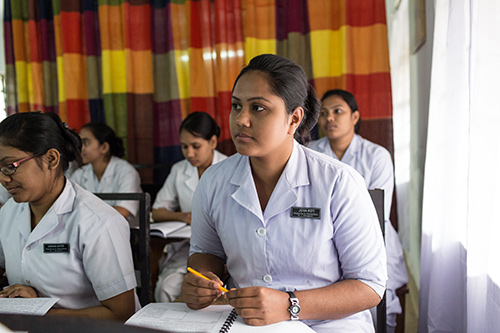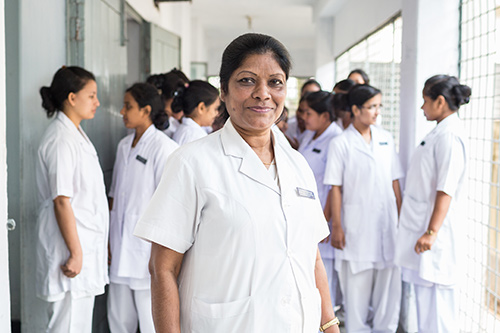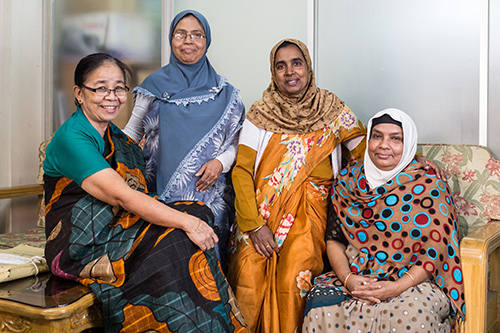News
Student midwives prepare to save lives in rural Bangladesh
- 01 May 2015
News
DINAJPUR, Bangladesh – The stairwells of the Dinajpur Nursing Institute, in northern Bangladesh, are bustling with midwives-in-training. Each classroom is crowded with women in crisp white uniforms, hovering over plastic anatomical models and practicing using foetal stethoscopes. The skills they develop here will save countless lives.
“I am confident in the skills I am learning and I want to use them to serve the people of my country, especially the poor,” said student Selina Akter, 20. She is one of the 2,025 students currently enrolled in a UNFPA-supported midwifery programme that will bring highly trained midwives directly into the health care system for the first time.

The first graduates will enter the health system in December 2015.
Upon graduation, the newly trained midwifery specialists expect to receive remote postings, often far-removed from the comforts of the big city.

“When I complete my training, I will go where the government assigns me,” Ms. Akter said.
These rural postings will address one of the primary challenges to maternal health care in Bangladesh: currently, almost 75 per cent of the population lives outside the country’s few major cities.
“The people of Bangladesh need services at the community level,” said Salma Khatun, an assistant professor of reproductive health, who has been deputized by the government’s Directorate of Nursing Services. “Many do not have the money to travel to [major] health centres. Having midwives available at the grassroots level will make services easily available.”
The midwives will bring highly specialized skills to the communities they serve.
The nurses currently staffing health facilities generally lack the training and authority to deal with labour complications, and must seek approval from senior doctors before they act. Yet even small delays can be fatal when women haemorrhage after delivery or require an emergency Caesarean section.

Midwives’ training will enable them to act decisively and without oversight. “Instead of having to wait for a doctor to give permission, midwives will be allowed to make their own decisions. This will make us much more effective than current nurses,” says Ms. Sattar.
Additionally, midwives learn techniques that can help to avoid costly C-sections. It is estimated that the savings from avoiding C-sections in Bangladesh will represents a 1,600 per cent return on the cost of a midwife’s training.
In the meantime, UNFPA and the World Health Organization are also supporting a six-month midwifery course for more than 1,300 nurses. These nurses – who already have some midwifery training – will learn the additional skills needed to qualify as certified midwives.
Bangladesh’s all-female midwifery workforce will also help to tackle cultural obstacles for women seeking health care.
“Most of the doctors at the rural level are men,” explained Professor Khatun. Because of strict societal views on male-female interactions, “this can lead to many women not wanting to seek treatment.”
But as more people realize the benefits of proper maternal health care, demand for skilled birth attendants is on the rise. According to Nidha Islam, a medical officer in the Gynaecology ward of the Thakurgaon District Hospital, midwives will play a crucial role in meeting these growing needs.
“By making decisions quickly based on their professional knowledge, midwives can save lives,” Ms. Islam said. “We are looking forward to having the help.”
–Luc Forsyth